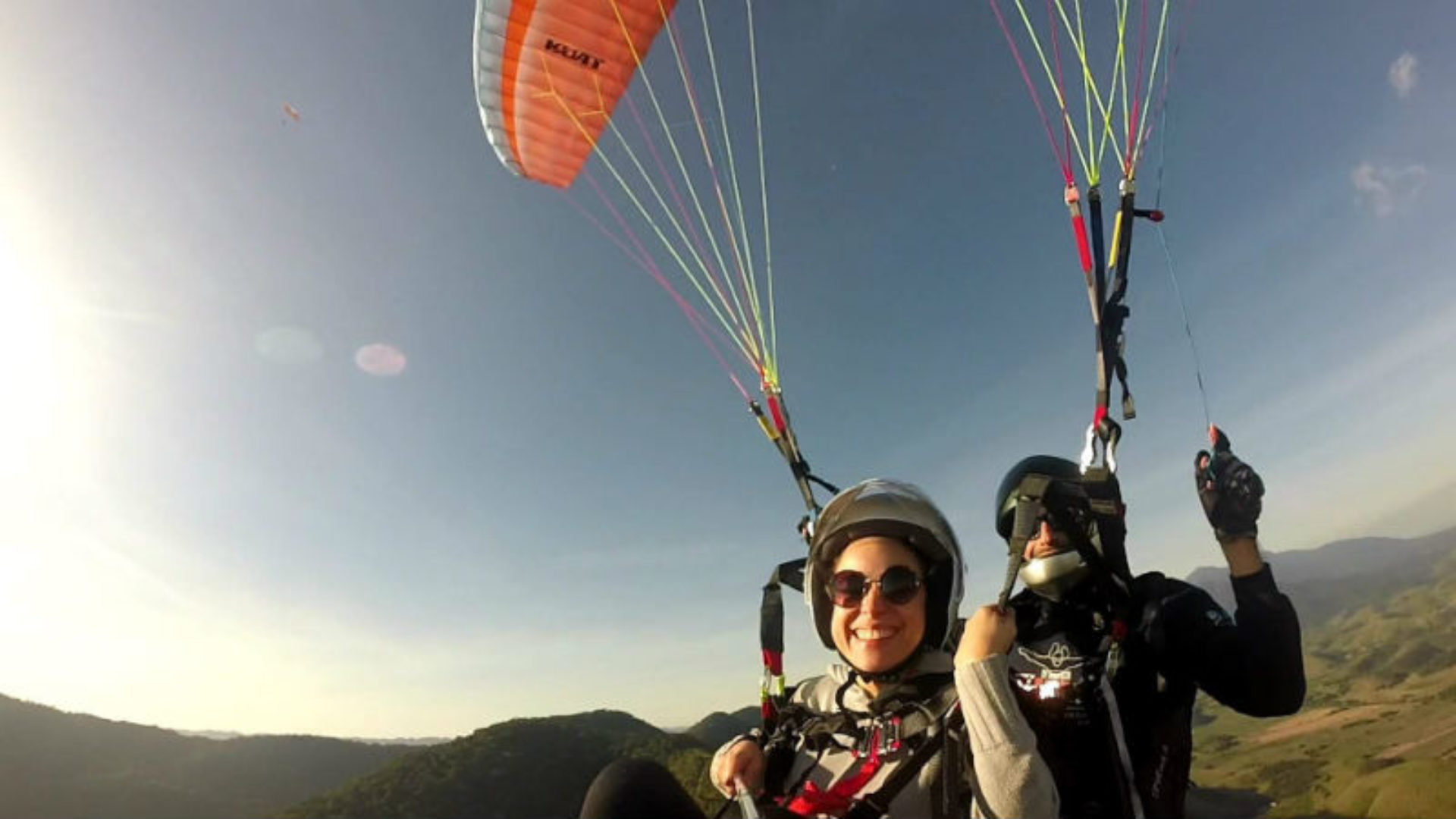Extreme, but not that much!
You are a person who enjoys adventures and sports in contact with nature, aren't you? But it is not like taking unnecessary risks. Tandem flight on paraglider or hang glider becames safer if we follow some recommendations. Free flight is an extreme sport. We are never free from the danger, but we may mitigate and reduce the risk of accidents.
Human factor
Human error is the root cause of most accidents, usually characterized by: lack of hability, recklessness or negligence.
The Deviations Pyramid (or accident pyramid) shows a proportion observed in real life: the greater the number of deviations, the greater the number of accidents. By eliminating or reducing deviations (caused by human error) we seek to reduce the likelihood of an accident to something close to zero.
Bird pyramid

Who is in charge of the double flight is the pilot. However, the passenger must assume responsibility for what happens to him, since before the flight he must normally sign a term assuming this risk. For this reason, it is important to know a little more about safety in free flight, as we don't just want to count on luck, do we?
Risks
In our daily life, we are not free from accidents. At home or at the streets, at work or on vacation, we are always living along with danger. Here are some examples:
In your car
When driving in a car, we are subject to accidents, whether due to our own mistake or someone's!
Factors that increase the risk: rain, bad roads, alcohol, speeding, bad maintenance.
At home
At home we have the danger of fire, especially in the kitchen. The oil in the food can start a fire. Leaking gas can cause an explosion with a simple flick of the light switch.
At work
At work, especially in factories in industries, employees are exposed to risks during the execution of activities. A hammer hit on the finger, stucking on machines, electric shocks, burns, falls etc.
Mitigating the risk
We must eliminate the DEVIATIONS on behavior and procedures, which are the base of the pyramid. These are examples of MITIGATING measures that we take on a daily basis.
In your car
Defensive driving, attention, being well rested and respecting traffic regulations are measures that would prevent most accidents.
Em casa
Não deixar panela ao fogo sem vigilância, realizar manutenção da mangueira de gás conforme indicado pelo fabricante.
At work
National codes aim to reduce the risk of accidents and improve worker conditions.
They define PROCEDURES that must be followed to reduce the risk. A form (Work Permit) is used in which the activity is planned and measures are taken to reduce risk exposure.
TRAINING is required for everyone involved in the activities. In addition, daily safety briefings are held, where the common risks of activities and accidents or incidents that have occurred are discussed to avoid recurrence .
In free flight
Talk to experienced drivers
If you have a friend who is a pilot, inquire with him about recommendations for a tandem pilot, taking into account the experience and safe attitude. If you don't know one, visit the flying site and talk to the local pilots. Listening to the recommendations of experienced pilots is a good start. Then, talk to the tandem pilot and assess whether he is capable of transmitting safety to you.
Meet the pilot
You need to know the pilot who will take you to the clouds. They are the one who will carry out the proper PROCEDURES, as well as guide you in takeoff, flight and landing. Clarify your doubts with them.
In Brasil, they must be a professional qualified by CBVL (Brazilian Confederation of Free Flight) or ABP * (Brazilian Paragliding Association) with homologation for DOUBLE FLIGHT. It is possible to see in the pilots's license if he has this approval. If you want to know more about pilot qualification and leveling procedures, visit the CBVL website or ABP *.
* Note: according to opinion of CBVL, it is the only entity with the competence to level and enable free flight pilots in Brazil.
Be on the safe side
After chosing your tandem pilot, all procedures and decisions are left to him. But before deciding to take off, the lay passenger can observe some factors, especially regarding the weather condition.
Examples of UNSAFE conditions for paragliding flight:
Strong wind
If there are gusts above 30 km/h the difficulty to make a good takeoff considerably increases. To give you a reference, if the wind is shaking tree branches, don't take off!
Lateral or "tail" wind
Lateral wind is difficult to assess by a layman. The tail wind can be easily perceived - it is the wind contrary to the head wind. The correct thing is to take off in the direction against the wind. If the wind is a tail, don't take off!
Risk of rain
In rainy seasons it is not recommended to practice the flight. The equipment, if wet, can lose its aerodynamics. A storm presents an enormous risk of a very serious accident, even fatal. If it is raining or if you can see cumulonimbus clouds from the ramp, don't take off!

Cb (Cumulunimbus cloud) in Sapiranga - RS
Have a nice flight!
All these precautions observed, being in the hands of a good pilot, just relax and enjoy the flight! Free flight equipment has evolved a lot in the last 10 years, reaching a very high level of safety. They are designed by computer, hard tested and certified by European EN standard for behavior in different situations.
Watch the videos on this page and start being touched by the desire to be close to the clouds and birds!



